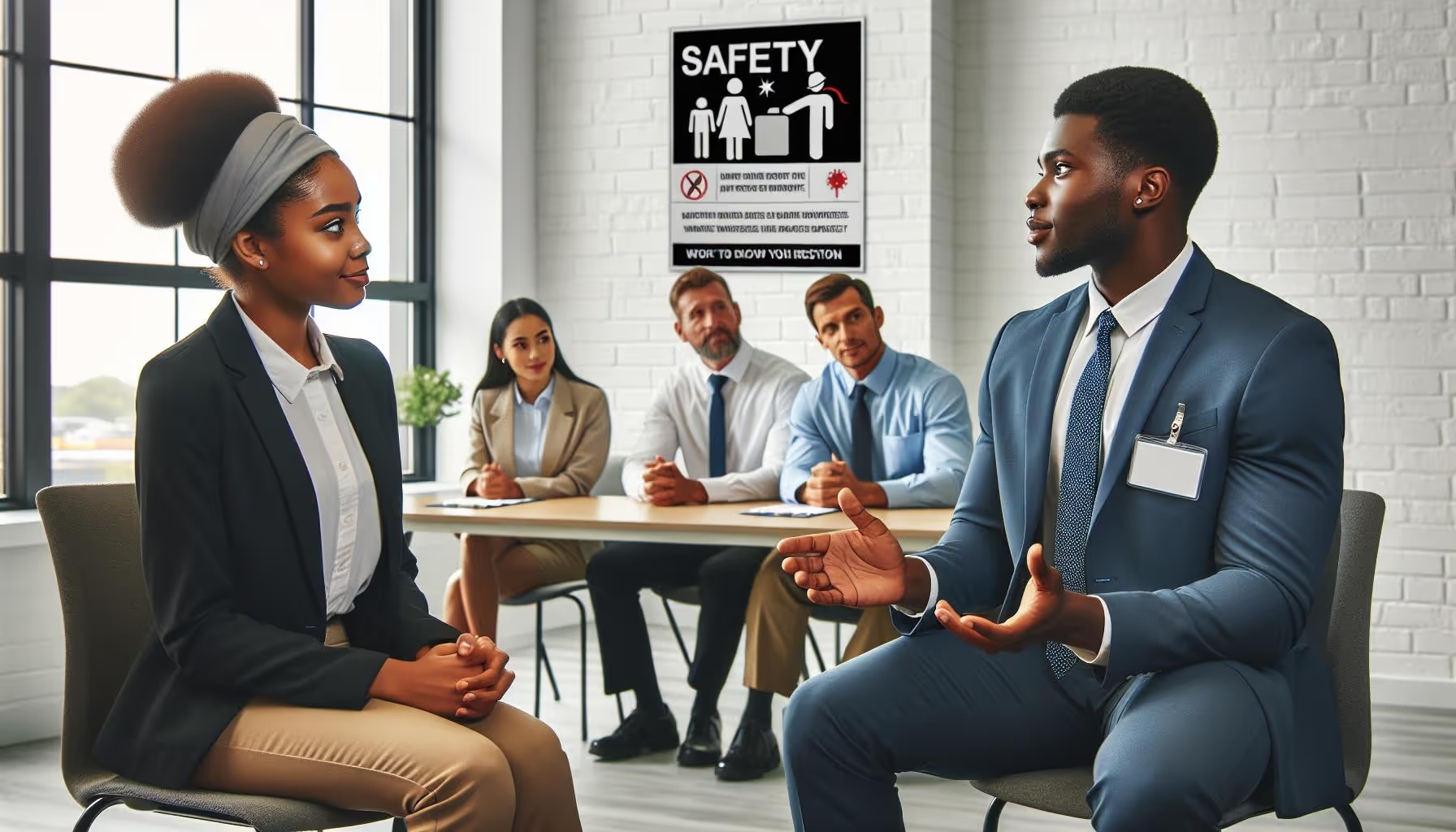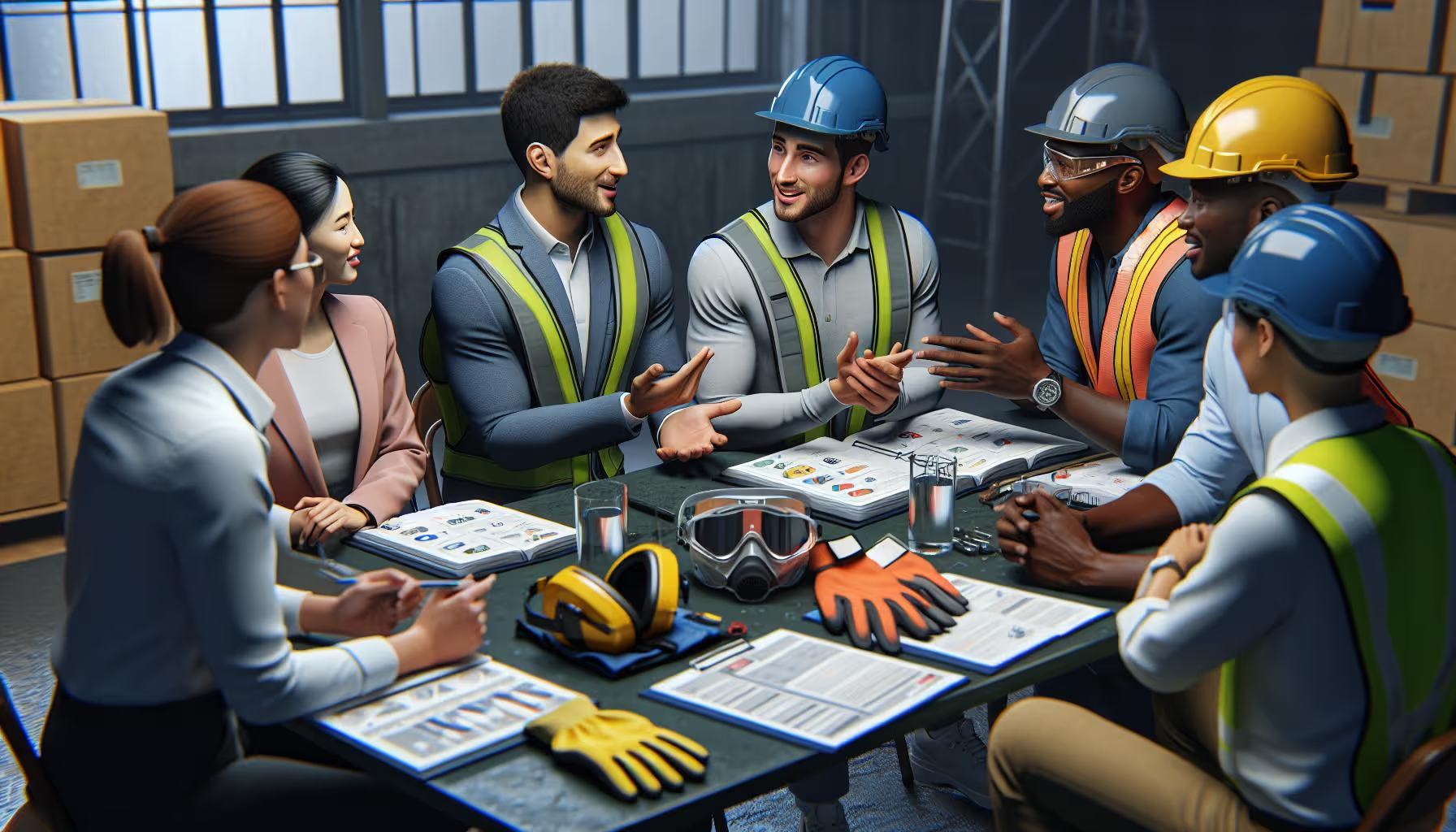Key Takeaways
- Prioritize Safety in Hiring: Emphasize the importance of hiring candidates who understand and value safety protocols to minimize workplace risks.
- Ask the Right Questions: Utilize a mix of open-ended and closed-ended questions to gauge candidates' knowledge and attitudes toward safety.
- Utilize Interview Techniques: Implement situational and behavioral interview techniques to assess candidates’ real-life responses and problem-solving skills regarding safety issues.
- Focus on Key Areas: Concentrate questions on candidates’ familiarity with safety protocols and their experiences handling hazardous situations to determine their readiness.
- Evaluate Responses for Red Flags: Watch for signs like lack of awareness or negative attitudes toward safety, which may indicate misalignment with safety-conscious workplace culture.
- Assess Problem-Solving Abilities: Evaluate candidates' critical thinking and collaborative skills by presenting hypothetical scenarios to understand their approach to safety in real time.
In today’s fast-paced work environment, ensuring safety is more crucial than ever. Did you know that nearly 4,500 workplace fatalities occur each year in the U.S.? With such alarming statistics, we must prioritize hiring candidates who understand and value safety protocols.
As we navigate the hiring process, it’s essential to ask the right questions that reveal a candidate’s approach to safety and their ability to respond to hazardous situations. By doing so, we not only protect our employees but also foster a culture of safety that can significantly reduce risks. Let’s explore effective strategies for questioning candidates, ensuring we build a safer workplace for everyone.
Importance of Safety Protocols in the Workplace
Safety protocols play a vital role in the workplace. With nearly 4,500 fatalities occurring annually in the U.S., prioritizing safety cannot be overstated. Hiring candidates who embrace safety measures and can effectively respond to hazardous situations contributes significantly to our organization's culture.
Understanding Safety Protocols
Safety protocols refer to the established guidelines and procedures that workers follow to minimize risks and avoid accidents. These measures cover various aspects, like using protective gear, reporting unsafe conditions, and following emergency procedures. By hiring individuals who value these protocols, we create an environment where safety comes first. Questions we might ask include: "How do you prioritize safety in your daily tasks?" and "What steps would you take if you noticed a safety hazard?"
Crafting Effective Questions for Candidates

Crafting effective questions about safety protocols helps us identify candidates who prioritize workplace safety. The right questions can reveal a lot about how candidates think and respond to hazardous situations.
Open-Ended vs. Closed-Ended Questions
Open-ended questions encourage candidates to elaborate on their thoughts and experiences. For example, we might ask, “What strategies do you use to maintain safety during your shifts?” This invites detailed responses, revealing candidates' deeper understandings and practices regarding safety.
Closed-ended questions, on the other hand, yield short, specific answers. Asking, “Do you use PPE?” limits the response but confirms essential safety habits. Incorporating both styles balances broad insights with clear confirmations. Mixing these approaches can help us gain a comprehensive perspective on a candidate’s safety philosophy.
Situational and Behavioral Interview Techniques
We can gain valuable insights by applying situational and behavioral interview techniques. Situational questions present candidates with hypothetical scenarios to gauge their responses. For instance, “What would you do if you found a faulty piece of equipment on the job?”
Behavioral questions focus on past experiences. Asking, “Can you describe an instance where you resolved a safety issue?” prompts candidates to share real-life situations, showcasing their problem-solving abilities under pressure. These techniques allow us to evaluate not just knowledge but actual behaviors that contribute to a safe work environment.
By engaging candidates with these strategies, we foster an informed and safety-conscious workforce.
Key Areas to Focus On

Focusing on specific areas can greatly enhance our understanding of a candidate's commitment to safety in the workplace. We should center our questions around their knowledge of safety protocols and their experiences with hazardous situations.
Candidate's Knowledge of Safety Protocols
Assessing a candidate's knowledge of safety protocols reveals their preparedness for maintaining a safe work environment. We can ask questions like, "What safety protocols do you consider critical in your role?" Responses highlight their familiarity with guidelines such as reporting hazards or using protective gear.
In addition, asking them to explain specific safety standards pertinent to our industry, such as OSHA regulations, shows their grasp of essential rules. Candidates with strong knowledge often embody proactive attitudes toward safety, indicating a readiness to contribute positively to our team's culture.
Experience with Hazardous Situations
Discussing a candidate's experience with hazardous situations sheds light on their practical skills and responses in real-life scenarios. We should prompt candidates with questions like, "Can you describe a time you faced a safety hazard? How did you handle it?" These questions help uncover their problem-solving abilities in pressure situations.
Candidates who can articulate clear examples often demonstrate the importance of quick thinking and calmness when addressing safety issues. Emphasizing past experiences helps us recognize if they'll effectively manage similar situations within our organization. By understanding their historical approach, we can gauge their ability to enhance workplace safety proactively.
Evaluating Responses

Evaluating candidates' responses is crucial in assessing their approach to safety protocols and their readiness for hazardous situations. We look for clear communication and genuine understanding in their answers.
Red Flags to Look For
When assessing candidates' safety responses, we spot potential warning signs. Candidates who downplay safety risks or express reluctance to report hazards can raise concerns. Some specific red flags include:
- Lack of Awareness: Candidates unaware of safety regulations, like OSHA standards, may not prioritize safety.
- Negative Attitude: Candidates showing cynicism towards safety training might contribute to a poor safety culture.
- Inconsistent Answers: Candidates who provide conflicting responses about past safety experiences might not be trustworthy.
These indicators can help us identify candidates who may not fit well within a safety-conscious organization.
Assessing Problem-Solving Skills
Assessing candidates' problem-solving skills under pressure is vital. We ask them situational questions about past experiences, especially related to hazardous situations. This helps uncover their critical thinking and decision-making abilities. We focus on specific skills such as:
- Analytical Thinking: Candidates who analyze situations before taking action demonstrate foresight.
- Creativity: Candidates who suggest innovative solutions for safety challenges may excel in risk prevention.
- Collaboration: Candidates displaying teamwork in safety initiatives can improve workplace safety culture.
To further gauge their reasoning, we can present hypothetical scenarios. For example, if a technician encounters a safety hazard unexpectedly, asking how they would respond provides insight. Real-world examples often yield richer responses. The goal is to understand how candidates think on their feet and drive safety improvements in our organization.
Conclusion
Prioritizing safety during the hiring process is essential for fostering a secure workplace. By asking the right questions about safety protocols and responses to hazardous situations we can identify candidates who are not only knowledgeable but also genuinely committed to maintaining a safe environment.
Evaluating their answers helps us gauge their understanding and problem-solving abilities under pressure. This proactive approach to hiring will ultimately contribute to a culture of safety that protects our employees and enhances overall organizational performance. Let's commit to making safety a top priority in our hiring practices and ensure our teams are equipped to handle any challenges they may face.
Frequently Asked Questions
Why is workplace safety important?
Workplace safety is crucial because it protects employees from potential hazards and reduces the risk of accidents. In the U.S., nearly 4,500 fatalities occur annually due to workplace incidents. Prioritizing safety not only safeguards employees but also enhances productivity and morale.
How can hiring practices improve workplace safety?
Hiring practices that focus on safety involve asking candidates specific questions about their safety knowledge and experiences. This helps identify individuals who prioritize safety protocols and can effectively respond to hazardous situations, ultimately fostering a safety-conscious workplace culture.
What types of questions should be asked during interviews?
In interviews, ask open-ended questions about safety strategies, closed-ended questions for specific safety habits, and situational or behavioral questions to assess candidates’ responses to past experiences or hypothetical scenarios. Tailoring questions to safety protocols will reveal a candidate's commitment to safety.
What red flags should employers look for in candidates?
Employers should watch for red flags like a lack of awareness of safety regulations, negative attitudes toward safety training, and inconsistent answers regarding past safety experiences. These signs may indicate a candidate is not a good fit for a safety-focused organization.
How do candidates demonstrate problem-solving skills related to safety?
Candidates can demonstrate problem-solving skills by discussing how they've handled hazardous situations in the past or how they would respond to hypothetical scenarios. Look for examples of analytical thinking, creativity, and collaboration, which are vital for enhancing workplace safety culture.






